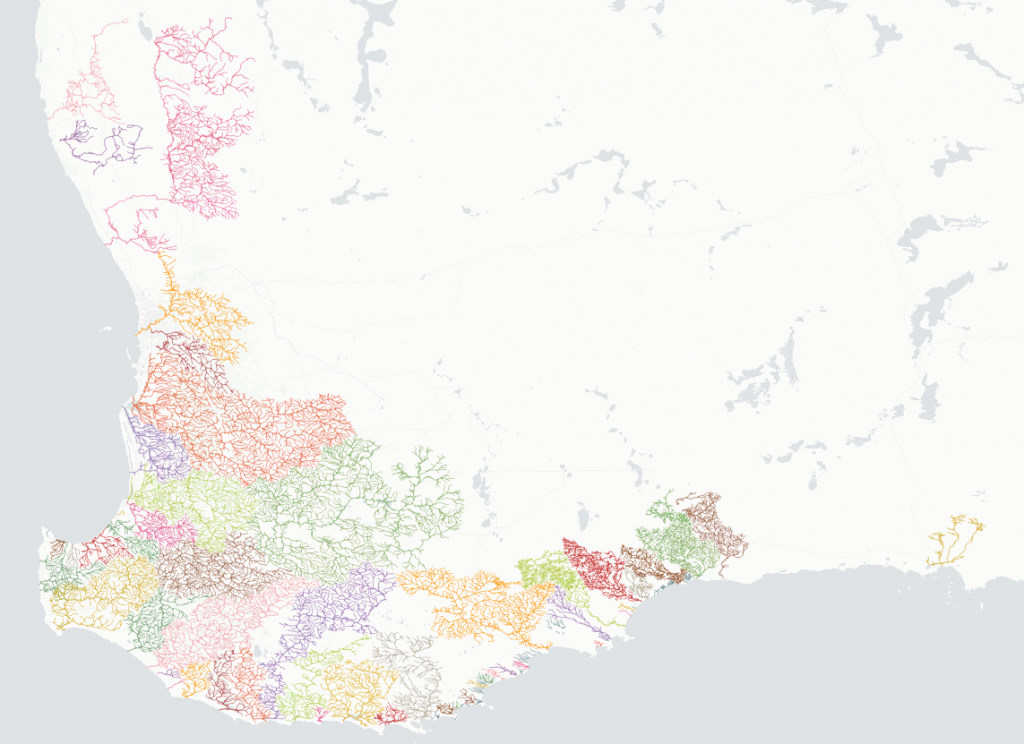As we gear up to the end of financial year it’s always good to look back on the great work our spatial team completed or are currently working through. In this blog we’ll highlight 6 projects coming from a host of clients including: The Department of Water and Environmental Regulation, Hydrologia and Garnet Mining Australia.
These projects cover a wide range of GIS tasks our team have been involved in, including data management, basic and complex processing, database creation, GIS strategy, spatial plugin development and yes, making maps!
We’ve been helping the Department of Water and Environmental Regulation (DWER) in support of a few important initiatives, including:
- The Region Estuaries Initiative (REI) is a “program to improve the health of six estuaries in the South West.” Our objective here was to create a map of the regional catchment group boundaries for estuaries alongside other data collated from the catchment groups.
- We provided quality control resources for the Department’s Healthy Rivers program, which was setup to “collect and interpret data on rivers and their catchments, and use the knowledge gained to support development of strategies to best protect the environment.” Through this comes the creation of the River Reaches spatial layer shown below. With well over 50 areas mapped quality control using a documented process becomes a major part of ensuring consistency and a high level of quality. This essentially requires the use of numerous GIS processes ranging from automated geometry checks to manual spot checks on attributes and linework.
Gaia Resources have had a great partner in Robin Connolly from Hydrologia, who has been sending through a number of small projects involving data processing tasks and map production for their surface water hydrology reports. This work often covers aspects of stormwater management, flood risk and environmental impact assessment around mine sites and other infrastructure. Our role as his extended GIS team is to source data and work through how best to represent options and hydrological modelling results with numerous other themes for each area. For more information have a look at our projects summary.
We had the opportunity recently to do a deep dive into the GIS system at Garnet Mining Australia (GMA) and help them to set up a best practice spatial environment for their core business workflows. This started with our standard GIS health check followed by the migration of data to a cloud-hosted database. We helped GMA to design file and folder naming conventions, and built up a guideline and set of procedures to help them easily manage their spatial data into the future.
This will create a more seamless experience for their workflows by using QGIS desktop GIS software to discover and load the most up-to-date information. Next up we will provide QGIS refresher training to GMA staff and a comprehensive handover of their new setup. In these difficult times with COVID-19 restrictions affecting businesses everywhere, we are looking at maintaining social distancing with a remote training session and combining classroom style training with our free online video tutorials.
Our software developers even got in on the act with GIS software this year when we worked with the Yamatji Marlpa Aboriginal Corporation (YMAC) to rebuild their QGIS plug-in for layer discovery and automated map production. Have a look at our previous blog about that project.
A special mention should also be given to our GIS analysts’ work on the recently released Retromaps website, where we carefully stitched together over 2000 georeferenced sewerage scheme plans from past decades. That website has been a big hit for the public to check out building outlines and historical mapping from their own neighbourhoods, and our blog from last week provides more detail on the work involved.
If you’d like to know more about GIS and our work in this space, please leave a comment below, connect with us on Twitter, LinkedIn or Facebook, or email me directly via jake.geddes@archive.gaiaresources.com.au.
Jake


Comments are closed.